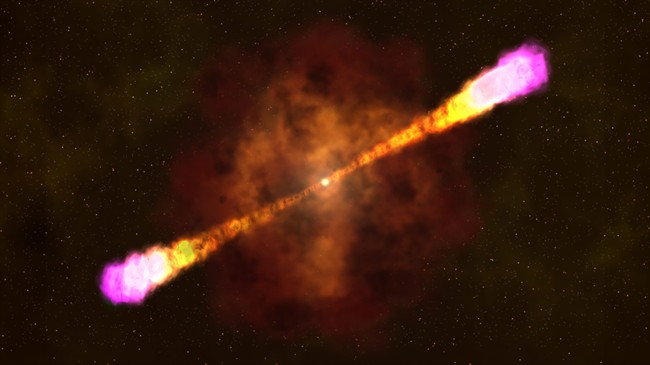TORONTO – Scientists around the world lit up social media on Wednesday evening amid reports of a gamma ray burst.

What’s the big deal?
These bursts — intense, brief flashes of gamma radiation, which also give off X-rays — are the most energetic explosions known to exist in our universe since the Big Bang. One way that this can happen is two extremely dense stars — called neutron stars — spiral in towards one another until they merge, creating a black hole.
What made this possible burst particularly exciting was that it originated from our next-door neighbour, the Andromeda Galaxy, also known as M31. Andromeda is at a distance of about 2.5 million light years from us, which would have made this the closest GRB ever recorded.
READ MORE: ‘Monster’ gamma-ray burst brightest cosmic explosion ever witnessed
But further analysis determined that it wasn’t a GRB.
Swift never actually said it was a GRB, but some assumed it was since Swift received an alert to turn toward the source of the radiation – a known X-ray source.
For a great first-hand explanation, read Phil Evans’ (who works with Swift), account here.
The burst, spotted by NASA’s Swift telescope, isn’t something rare in the universe (remember: billions of galaxies with hundreds of billions of stars each). GRBs have been studied for about 20 years, and one happens about every couple of days or so. These bursts are incredibly bright — but not to the human eye. And the outburst of a GRB could last for just seconds.
To compare, a GRB is around 10,000,000 times brighter than a supernova, an exploding star; one gamma-ray burst would produce more energy in a few seconds than our sun will in its entire lifetime. They are so powerful that we have detected one 13 billion light years away — at the other side of the known universe.
A recent study suggested that a GRB located about 3,000 to 12,000 light-years away irradiated Earth about 1,200 years ago. If such an event occurred today, it would disrupt our communications. And if it were to happen a lot closer…well, that much radiation just wouldn’t be good for life on Earth.
Though the news may seem somewhat disappointing, it still is pretty cool to see the universe in action. And let’s be thankful that it didn’t happen a lot closer to home.




Comments